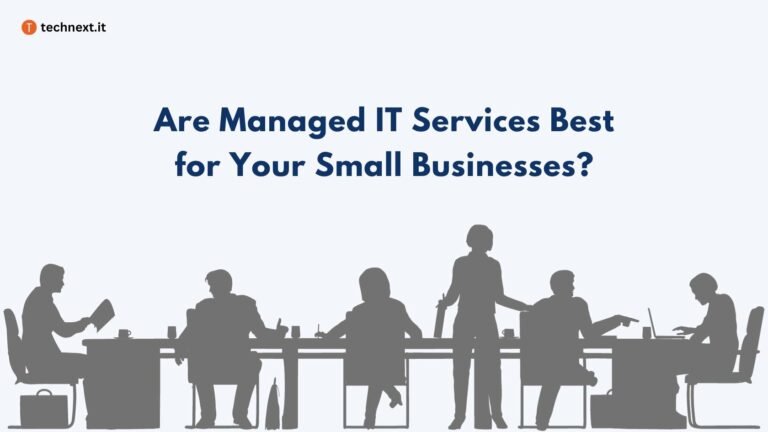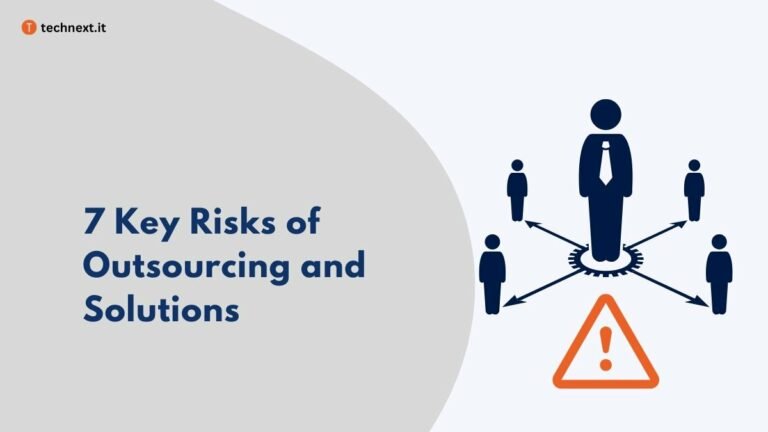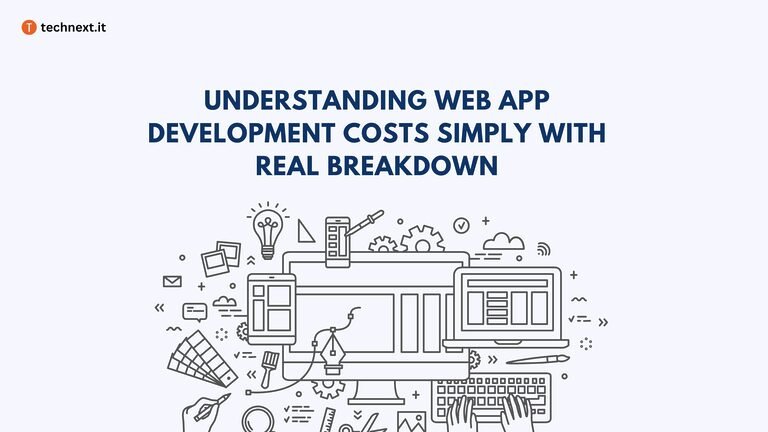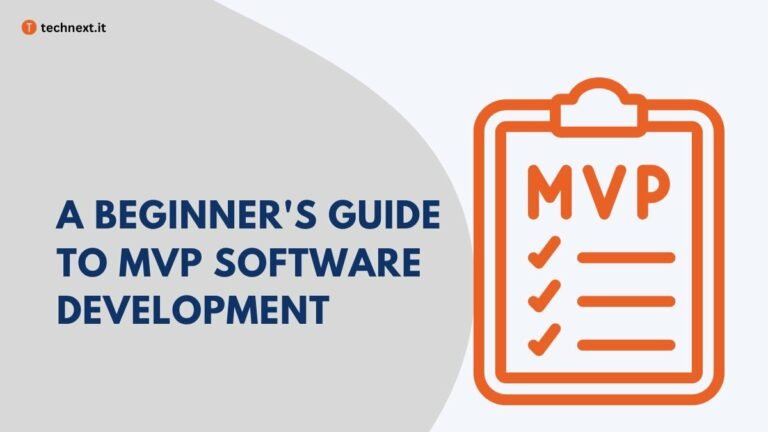A Simple Guide to Enterprise Software Development in 2023
This guide aims to give you all the information you need before starting enterprise software development for your company. Including a step-by-step guide, real examples, and expert tips and tricks.

Businesses come in various sizes, from newly established startups to expanding scale-ups and established enterprises. As these businesses scale, they require a larger workforce, maintain a more extensive supply chain and serve more users to keep their revenue growth upward.
To do all those activities effectively, enterprises need to utilize technology and enterprise software. Unfortunately, enterprise software development is a complex process, leaving managers and business leaders with many questions.
This guide is here to help you navigate the process and provide answers to make it easier for you to develop a successful software solution for your business.
Let’s discuss the things that will help you navigate the process and provide answers to make it easier for you to develop a successful software solution for your business.
Understanding Enterprise Software Development
What is enterprise software development?
To understand enterprise software development, you can start by understanding enterprise software first. It is a category of software applications specially developed to meet the complicated needs of large organizations or businesses by serving multiple departments, functions, or locations within an organization.
Naturally, enterprise software development refers to the process of creating and maintaining these types of software applications. These applications’ primary purpose includes optimizing different aspects of enterprise operations, such as management, collaboration, productivity, and decision-making.
5 Real Examples of Enterprise Software
Let’s solidify your understanding with 5 real-life examples of enterprise software used by large companies.
Microsoft:
Official website: https://www.microsoft.com/en-us/
Type: Microsoft provides multiple types of enterprise software such as Enterprise Resource Planning (ERP), Enterprise Communication, Business Intelligence (BI), Customer Relationship Management (CRM), etc.
We all are familiar with the name Microsoft. They are one of the largest enterprise software companies, with a revenue of $198 billion in the 2022 financial year. Microsoft offers many enterprise system software applications such as Microsoft Teams, Microsoft 365, Outlook, Azure, Windows 11 Enterprise, Dynamics 365, Skype, etc. Their software includes sales modules, customer service, communication, finance, supply chain management, human resources, and more.
Salesforce:
Official website: https://www.salesforce.com/in/?ir=1
Type: Customer Relationship Management (CRM).
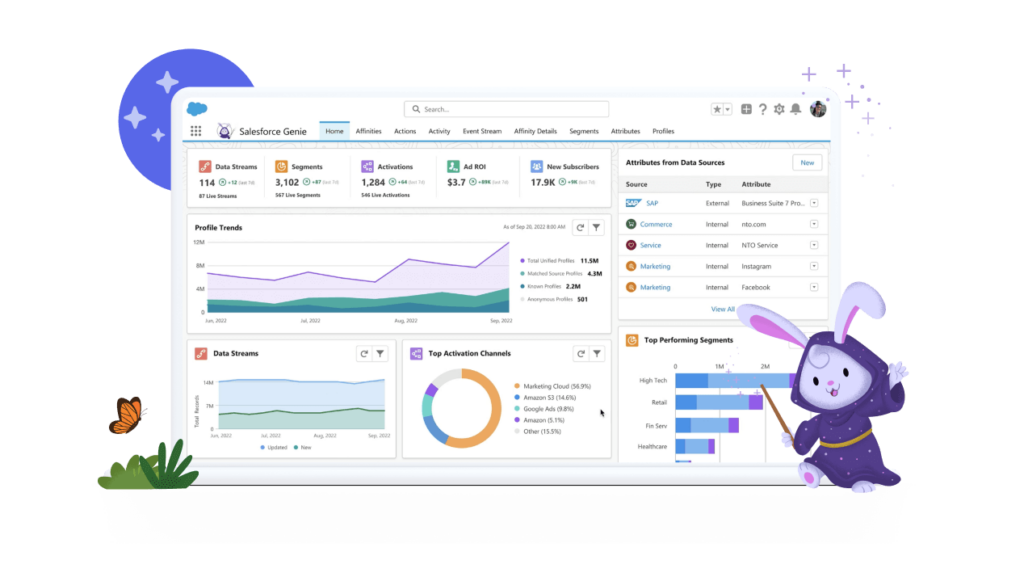
Salesforce is also a renowned provider of cloud-based enterprise software, especially in customer relationship management (CRM). They have a rating of 4.3 in G2 and a 4.4 rating in Capterra. Salesforce’s CRM software can help you with customer interactions, marketing campaigns, sales funnels, and customer support.
Datapine:
Official website: https://www.datapine.com/
Type: Business Intelligence (BI)
Datapine is a comprehensive BI platform that offers beginner to advanced data analysis capabilities such as data connectors, self-service analytics, effective reporting, effective reporting, etc. Users can simply connect their data sources and analyze data with Datapine’s drag-and-drop interface or complex SQL mode. With high ratings, this Birlin-based platform has gained recognition as a reliable and valuable solution for enterprise operations.
ServiceNow:
Official website: https://www.servicenow.com/
Type: Enterprise Resource Planning (ERP)
In 2018, Forbes magazine recognized ServiceNow as the most innovative company in the world. Their enterprise software system focuses on IT service management (ITSM) and IT operations management (ITOM). ServiceNow offers your business various applications to help with service management, business management, operational management, and financial management.
Stripe:
Official website: https://stripe.com/
Type: Online Payment Enterprise Software
Stripe is a market leader in online payments that supports over 135 currencies and payment methods and operates in over 45 countries.
Organizations can efficiently handle recurring payments and complex payment flows with Stripe’s intelligent billing and subscription management tools. This is particularly beneficial for marketplaces and enterprises.
How it’s different from other software products?
From the definition, you probably have understood that enterprise software is different from other software products. Let me explain more.
Let’s start with users. Enterprise software is developed to meet the particular needs of large organizations or businesses, while regular software is typically designed for individual users or small groups.
Enterprise applications usually have more complex and customized functionalities, security requirements than regular software products.
Next is scalability. Enterprise software is designed to support the growth and expansion of organizations, while regular software is intended for small-scale usage.
Enterprise applications often integrate with other systems and databases within the organization, and regular applications usually interact with external APIs and services.
Enterprise applications typically have a longer development cycle, higher cost, and stricter quality standards than web applications.
Types of Enterprise Software
Since enterprises have different business requirements, there are several types of enterprise software available. Here is the most common type of software enterprise businesses use in 2023.
| Type | Description |
| Enterprise Resource Planning (ERP) | Manages core business processes such as product development, inventory management, human resources, finance, and supply chain. |
| Customer Relationship Management (CRM) | Helps businesses manage interactions and relationships with customers, including sales, marketing, and customer support. |
| Business Intelligence (BI) | Collects, analyzes, and presents business data to support decision-making processes. |
| Marketing Tools(MT) | Helps to plan, execute, and measure marketing campaigns and activities |
| Supply Chain Management (SCM) | Oversees the flow of goods, information, and finances involved in the production and delivery of products or services. |
| Online Payments (OP) | Process and manage online transactions and payments |
| Enterprise Content Management (ECM) | Manages the creation, storage, distribution, and archiving of documents and other content within an organization. |
When is it necessary to develop enterprise software?
Basically, all enterprise-level businesses need enterprise software to run their operations. In most cases, they fulfill their software needs with ready-made software. So, when does an enterprise need to develop custom enterprise software?
Scenario one can be when an organization has complex business processes that ready-made software cannot address. This type of situation is common in industries with highly specialized operations, intricate workflows, or specific compliance requirements.
Scenario two can be the integration of multiple systems and databases to streamline operations within an organization. Enterprise software can facilitate seamless data flow between different systems across the organization.
As for scenario three, organizations sometimes develop enterprise software to gain a competitive edge by enhancing operational efficiency, enabling unique features and functionalities, or improving customer experiences.
Consider scenario four, when the organization has the resources, expertise, and time to invest in developing enterprise software or when it can partner with a reliable and experienced software development company.
Scenario five can be the organization’s outdated system modernization by developing enterprise software. It allows for the modernization of technology infrastructure, enabling improved performance, enhanced user experiences, and the integration of new features.
How to Develop Enterprise Software in 2023

Step 1: Gathering Key Requirments
To create successful software, your team must first identify the business need or opportunity it addresses. This requires careful analysis and compilation of all requirements.
First, you can identify the sources of requirements, which may involve engaging with specific individuals, conducting focus groups, or conducting industry research. Then you must determine the most suitable methods for gathering information, such as surveys, interviews, or focus groups. It’s time to analyze your collected data to determine the requirements. Last but not least, you need to put all this into paper based on the priority.

Pro Tip: While identifying and documenting the requirements, capture detailed and specific requirements rather than generalizations. As you are about to start a long project, you need to ensure that the software meets the expectations of your stakeholders and delivers the desired functionality. Also, provide a high degree of transparency.
Step 2: Mapping Out the Plan
Once you are satisfied with the required document, the subsequent phase involves the creation of the software development plan. You need to combine the project scope & objectives with your budget, timeline, and deliverables.
Start by identifying your project flow. Then decide on the scope of your project plan and output. Choose a development methodology (agile, waterfall, or hybrid approaches) depending on project requirements and preferences. Then it’s time to estimate the resources, costs, time, and effort required for development. You have to establish milestones to track progress, quality, and risks.

Pro Tip: Throughout this long process of developing enterprise software, you need to make sure of collaboration, communication, and documentation among the software development team and stakeholders.
Step 3: Designing the Vision
With your software development plan in hand, it’s time for your UI/UX team to step up. Your team needs to create a design and architecture plan based on the requirement.
You can start by wireframing to determine the basic structure, elements, navigation, features, and look of the software before adding content and graphics. Then create user story to cover the requirements of your users on time concisely. With the data, choose a design concept and create prototypes for testing and iteration.

Pro Tip: For the success of your software development stage, you need a great design that not only fulfills the need of your user and also ensures the feasibility of implementation during development, as enterprise software is a significant project.
Step 4: Executing the Development Phase
After obtaining a feeling of assurance in your design, you can move on to bringing ideas to life (development). The idea here is to implement the software based on the architecture and design.
Your development team needs to start writing code based on the design specifications, using programming languages and frameworks suitable for the project. This also involves connecting modules, libraries, databases, and third-party APIs to ensure seamless functionality and data exchange.
They must follow coding standards and best practices to ensure code quality, readability, and maintainability.

Pro Tip: Enterprise software development requires stringent security measures and compliance with industry standards and regulations. You have to follow robust security practices during the development process to ensure data protection and regulatory compliance.
Step 5: Iterative Testing and Development Cycle
Once you are done with your base development process, start a testing and development loop to address issues like bug fixing, code adjustments, and system enhancements.
You can start by creating a test plan that outlines the testing objectives, scope, test coverage, test environment, and test schedule to ensure thorough and systematic testing. You can use various types of testing, such as unit testing, system testing, integration testing, and acceptance testing. Then create a loop of testing and development according to the plan and the collaboration of your development and testing team to verify the software’s functionality, performance, and reliability.

Pro Tip: Utilize test automation tools and frameworks to automate time-consuming and repetitive tests for enterprise software. You need to pay attention to test data management. Proper test data management can help you to identify potential issues in different usage scenarios.
Step 6: Deploy and Iterate
Once you have confirmed that your software has been tested adequately, you can proceed to deploy it for your actual users to utilize and enjoy.
However, your responsibilities do not end there. You must also dedicate an equal amount of effort towards maintaining, updating, and offering support for your software.
Key Considerations for Successful Enterprise Software Development
To ensure your enterprise software development is successful, there are several key factors you need to consider. These include security, scalability, user experience, flexibility, and cost. Each factor plays a crucial role in shaping the outcome of the software development process. Let’s know how:
Security
When developing enterprise software, you need to prioritize
the security of your software first, especially since thousands of employees will use the application. You should give different levels of employees different security clearances so they can only see the information and data they need to do their jobs. By putting in security checkpoints and targets, you can check on the security regularly and fix any problems or breaches right away.
Scalability
To ensure a large organization can successfully use your enterprise software, it is crucial that you also give scalability importance during development. Your application should be able to meet the needs of both small and large employee groups while maintaining performance and usability. Also, to support the growth of the business, your enterprise application should be made so that it can grow with the company and add new features over time.
User experience
Another crucial topic you need to recognize while developing enterprise software is user experience. You can use a simple, user-friendly interface to increase productivity and ensure user pleasure. You can also simplify operations to increase efficiency. Your application must support seamless integration with other systems, APIs, and third-party applications to enable smooth information exchange and process automation.
Flexibility
In developing your enterprise software, flexibility is one of the most important key factors. By prioritizing flexibility and integration, you can develop enterprise software that adapts to changes, promotes efficiency, and supports the growth and success of the organization. This enables you to optimize the software’s functionality and align it closely with any unique business processes.
Cost
To ensure that your enterprise software development project aligns with your budget and long-term sustainability goals, you must consider the cost factor. You need to consider both the initial investment and long-term maintenance costs. By properly scoping your project, estimating costs accurately, and allocating resources effectively, you can achieve your cost goal.
A Simple and Cost-Effective Way to Develop Enterprise Software
It goes without saying that enterprise software development demands a significant amount of resources, both financially and in terms of effort. You will need to recruit skilled professionals such as experts, developers, and designers, as well as set up office spaces and attend to other necessary tasks.
Not only that, in enterprise software development, there is room for error at every step. From requirements gathering to deployment, many things can potentially go wrong and create disruptions in your core business.
One possible solution could be to outsource the development to a company that has a better understanding of enterprise software development. Fortunately, there are many outsourcing companies that specialize in developing reliable enterprise software and providing long-term support. Technext is proud to be one of these companies that businesses trust.
Over the past decade, Technext has assisted over 100 businesses in creating personalized solutions that collectively serve more than 1 million users. To learn more about our enterprise software development service and receive a complimentary consultation, please schedule a meeting with our co-founder, Reza.


